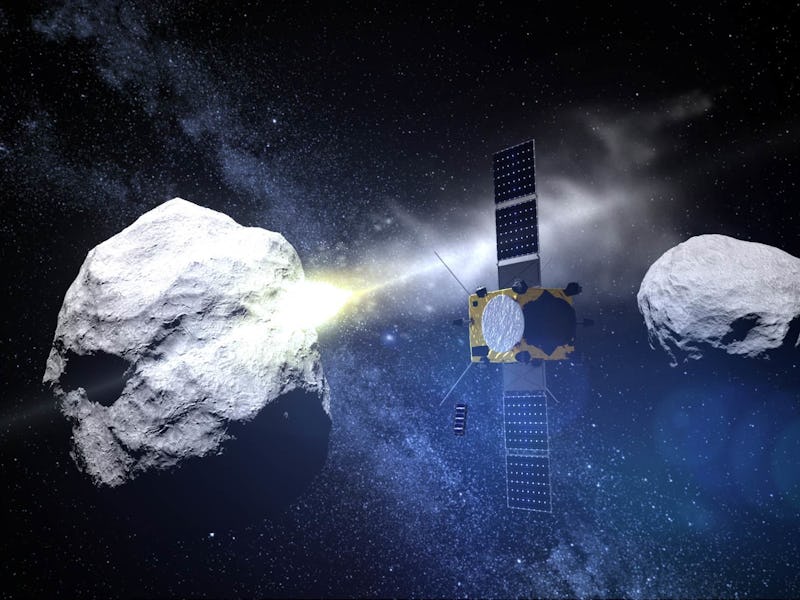3 Current Projects That Will Help Save the Earth From Asteroids
For when we don't have Bruce Willis to rely on.

If you can’t believe another Asteroid Day has come and gone with nary a mention in the mainstream media, neither can we, but rest assured that scientists are not messing around when it comes to this issue.
During an Asteroid Day — held this past Friday, June 30 — in a conference call with reporters last week, Ed Lu, a former NASA astronaut, acknowledged that “the overall risk [of an asteroid impact] in any given year is small.” And the odds of those impacts being more destructive decreases dramatically as the size of the asteroid increases — there are simply not a whole lot of big-as-hell rocks strewing about the solar system which could cause a civilization-ending event. And of those rocks — larger than one kilometer in diameter — scientists have managed to track about 90 percent of them.
Nevertheless, Lu argues that asteroids, which are just around 30 to 40 meters in size, can still wreak havoc on communities around the world, especially in dense cities. It would only take one stray rock headed for the planet to cause an ungodly amount of devastation.
Here are three of the most important projects currently being undertaken, which could help lead to more robust asteroid tracking and impact mitigation systems.
B612
Lu is also the executive director of the B612 Asteroid Institute, a nonprofit dedicated to planetary protection systems. On Thursday, Lu expressed optimism that scientists are beginning to focus on cataloging and tracking asteroids that are closer to the scale of 140 meters, but he emphasizes “that’s really not enough either.” He calls it a stepping stone to a progression to start identifying and tracking asteroids down to just 30 meters.
How? B612 is currently actively searching for smaller asteroids through a process called “synthetic tracking,” in which graphic processing is used to leverage the technical abilities of smaller telescopes to increase their ability to find smaller objects. The project intends to use bigger telescopes in the future when they finally become available, but for now this is one solution to getting in on the groundwork sooner rather than later. Lu says synthetic tracking “greatly increases our ability for finding these 40- to 30-meter asteroids.”
AIDA
The joint NASA-ESA mission known as the Asteroid Impact and Deflection Assessment (AIDA) has a pretty simple but critical goal: smash a small satellite into an asteroid, and measure to what extent this changes the physics and movement of the rock. The whole thing is a two-part project which involves launches in 2020 and 2021, respectively, but the real fun will happen in October 2022, when ESA and NASA will finally get the opportunity to bludgeon the near-Earth asteroid 65803 Didymos at over 13,000 mph.
The data AIDA could collect from this mission will basically be an indication as to what future engineers will need to build in order to feasibly stop an asteroid from colliding with the Earth using a counter-collision remedy.
NEOShield-2
NEOShield is essentially a project that combines the aforementioned concepts — tracking threatening asteroids and physically changing the trajectories of any headed for Earth — and puts them under one umbrella. NEOShield manages to take a much more comprehensive approach to asteroid research by folding everything in.
The second iteration, NEOShield-2, is an audacious project, which seeks to launch a reconnaissance spacecraft to study a NEO, conduct a sample return, test out a flyby module, and even execute its own “kinetic impact” mission to collect data on using physical objects to change asteroid velocities and trajectories.